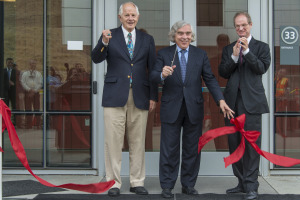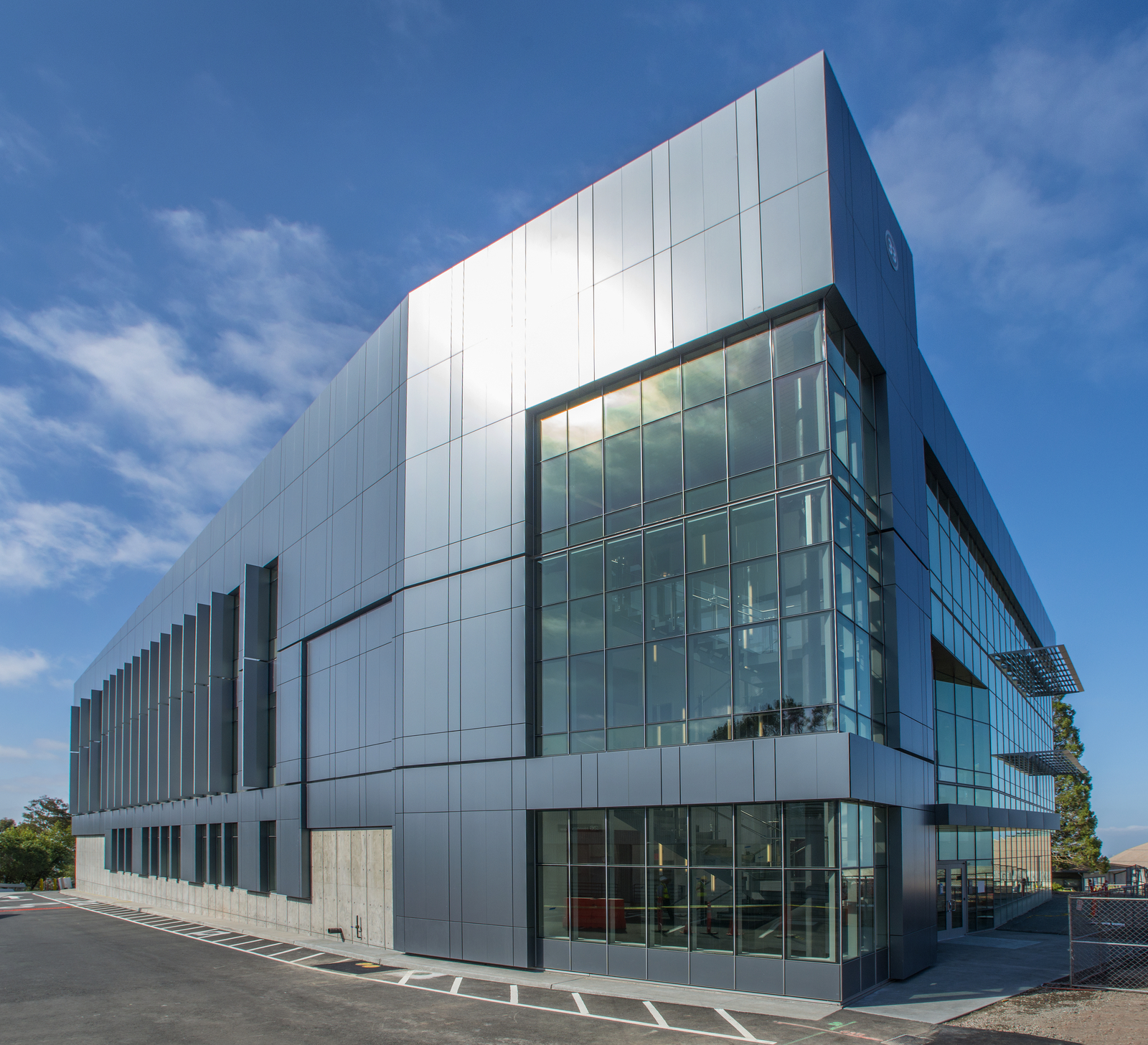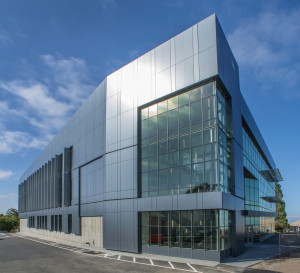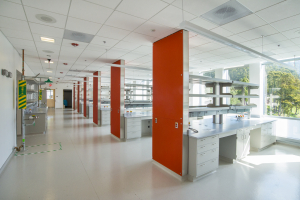While it has a humble name—Building 33 or the General Purpose Laboratory— a new facility at Lawrence Berkeley National Laboratory (Berkeley Lab) will house game-changing aspirations, especially in the areas of energy storage and renewable energy.
Inaugurated today with remarks from U.S. Department of Energy Secretary Ernest Moniz, the 43,000 sq. ft. building will be devoted to flagship centers in materials sciences and energy storage research, as well as to key biosciences programs.
“The General Purpose Laboratory will help scientists pursue groundbreaking scientific research needed to combat climate change and support economic growth by driving innovation across the clean energy landscape,” said Secretary Moniz. “The research at this lab will focus on key mission areas for the Department of Energy and will help continue America’s role as a global leader for science and innovation today and into the future.”
Among the building’s new tenants will be the Berkeley Lab site of the Joint Center for Energy Storage Research, or JCESR, a multi-lab program led by Argonne National Laboratory aimed at achieving revolutionary advances in battery performance.

Cutting the ribbon to the General Purpose Laboratory are (l-r) Berkeley Mayor Tom Bates, Energy Secretary Moniz, Berkeley Lab Director Paul Alivisatos.
“We are thrilled that the General Purpose Lab will be the West Coast home of JCESR, DOE’s flagship energy storage program,” said Berkeley Lab Director Paul Alivisatos. “We appreciate this investment by the DOE in infrastructure that will support a robust portfolio of renewable energy research, and are eager to offer our partners in academia and industry the added value of working with the Berkeley Lab community.”
The General Purpose Laboratory is part of Berkeley Lab’s seismic retrofit plans; a number of old buildings were taken down and replaced with the modern facility. The $54 million effort – which was completed on time and on budget – was funded by the Department of Energy’s Office of Science.
Berkeley Lab’s scientific legacy goes back decades, to 1931 when lab founder Ernest Orlando Lawrence began his research efforts at UC Berkeley. Since that time, what was once termed the “Old Town” section of the lab became outdated, and in some cases, seismically unsafe. The General Purpose Laboratory represents Berkeley Lab’s commitment to re-purpose such brownfield sites as Old Town while it strives to meet the needs of 21st century science and address many of our nation’s most daunting problems.
“The GPL’s proximity to Berkeley Lab’s world-class user facilities such as the Advanced Light Source, the Molecular Foundry, and supercomputing center will enable JCESR’s researchers to image and understand materials for energy storage at the nanoscale,” said George Crabtree, Director of the Joint Center for Energy Storage Research. “We think this work will be the key to solving the grid and transportation challenges that currently hamper our transition to a low carbon economy.”
The new building will be a practical example of Berkeley Lab’s efforts, not just in battery research, but in energy efficiency, too, by achieving LEED Gold Certified status.
The building has been designed to use 40-percent less energy than the standard for today’s buildings. And with approximately 40-percent of offices and 60-percent of labs, the open office environment allows for expansive light-filled spaces. Windows, lights and exterior louvers will work systematically to control the amount of daylight needed, with interior lights dimming as exterior light from windows increases.
It will house 33 labs and offices for approximately 130 researchers.
Joining JCESR in the new building will be researchers from a portion of the Joint Center for Artificial Photosynthesis as well as Berkeley Lab’s Life Sciences, Materials Sciences and Physical Biosciences divisions. Those research efforts will focus on cancer and radiation, neuroscience, structural and cell biology, and environmental remediation, among others.
The easily customizable wet labs and research space will also allow the programs to quickly adjust to new priorities as discoveries are made.
The General Purpose Laboratory building was designed by RMW Architecture and Interiors, along with Forell/Elsesser Structural Engineers and Gayner Engineers, who designed the mechanical, electrical and plumbing systems. The construction contractor was Webcor Builders, who began work in July of 2011.
# # #
A General Purpose Lab Facility Full of Green Features:
- Solar water heating, day lighting, high R-value insulation, a “cool roof,” energy efficient lighting
- A modern HVAC (space heating and cooling) and lighting control system that can automatically adjust to occupancy conditions, and includes a “fan wall” design element so overall energy savings can also be achieved when windows are open
- A “Dashboard” function that will display current and trending energy use data to interested occupants
- A low-water use design throughout the facility and landscape
- Use of renewable materials, and use of 100 percent recycled steel for the buildings girders
- Siting of the building, on a re-use site, adjacent to a shuttle bus stop and within easy walking distance of other research facilities and the lab dining, banking, and meeting facilities
About Berkeley Lab
Lawrence Berkeley National Laboratory addresses the world’s most urgent scientific challenges by advancing sustainable energy, protecting human health, creating new materials, and revealing the origin and fate of the universe. Founded in 1931, Berkeley Lab’s scientific expertise has been recognized with 13 Nobel prizes. The University of California manages Berkeley Lab for the U.S. Department of Energy’s Office of Science. For more, visit http://www.lbl.gov.
DOE’s Office of Science is the single largest supporter of basic research in the physical sciences in the United States, and is working to address some of the most pressing challenges of our time. For more information, please visit http://science.energy.gov/.
About JCESR
The Joint Center for Energy Storage Research (JCESR) is a major partnership that integrates researchers from many disciplines to overcome critical scientific and technical barriers and create new breakthrough energy storage technology. Led by the U.S. Department of Energy’s Argonne National Laboratory, partners include national leaders in science and engineering from academia, the private sector, and national laboratories. Their combined expertise spans the full range of the technology-development pipeline from basic research to prototype development to product engineering to market delivery. Funding for JCESR is provided by the U.S. Department of Energy Office of Science.



